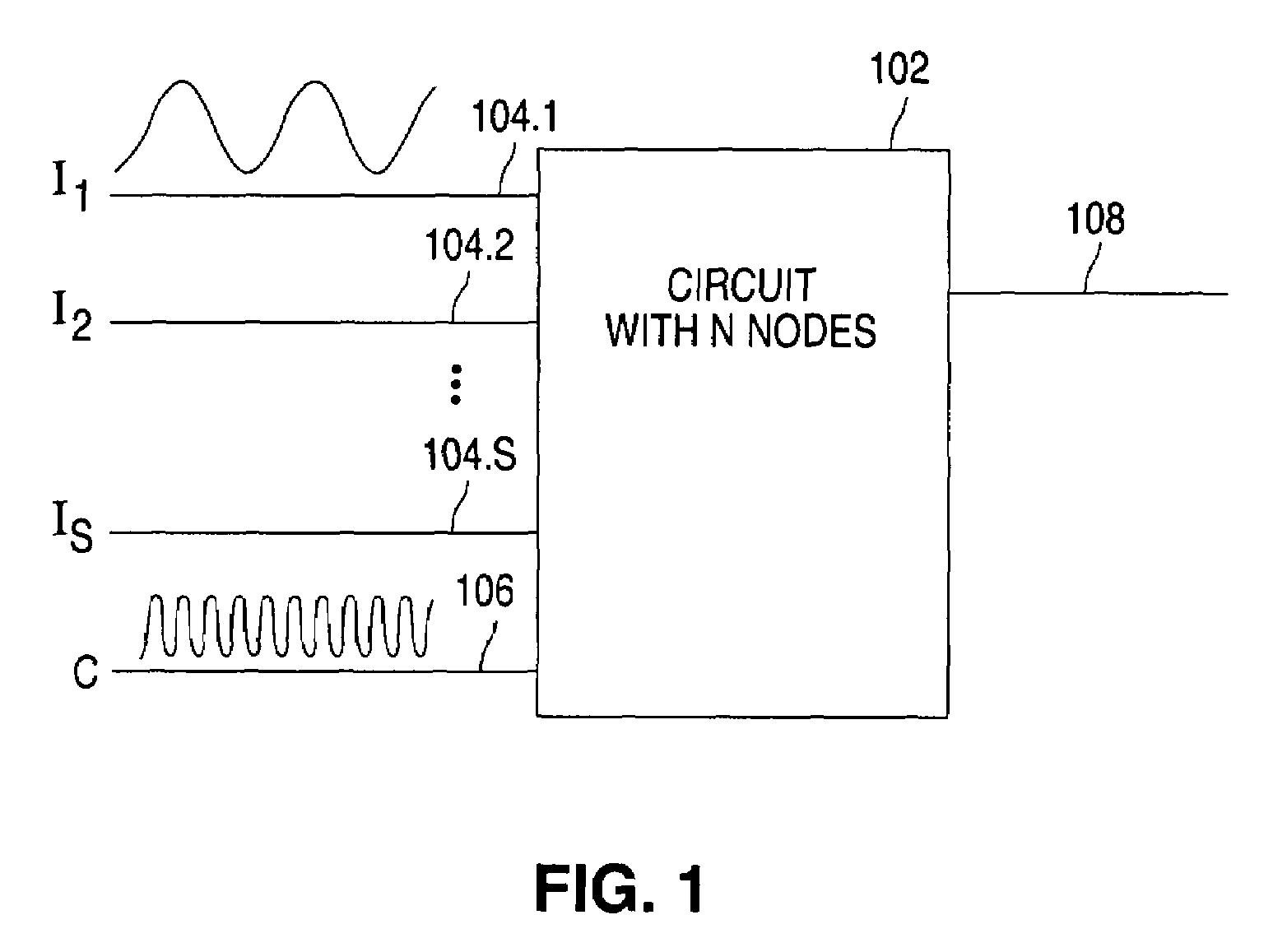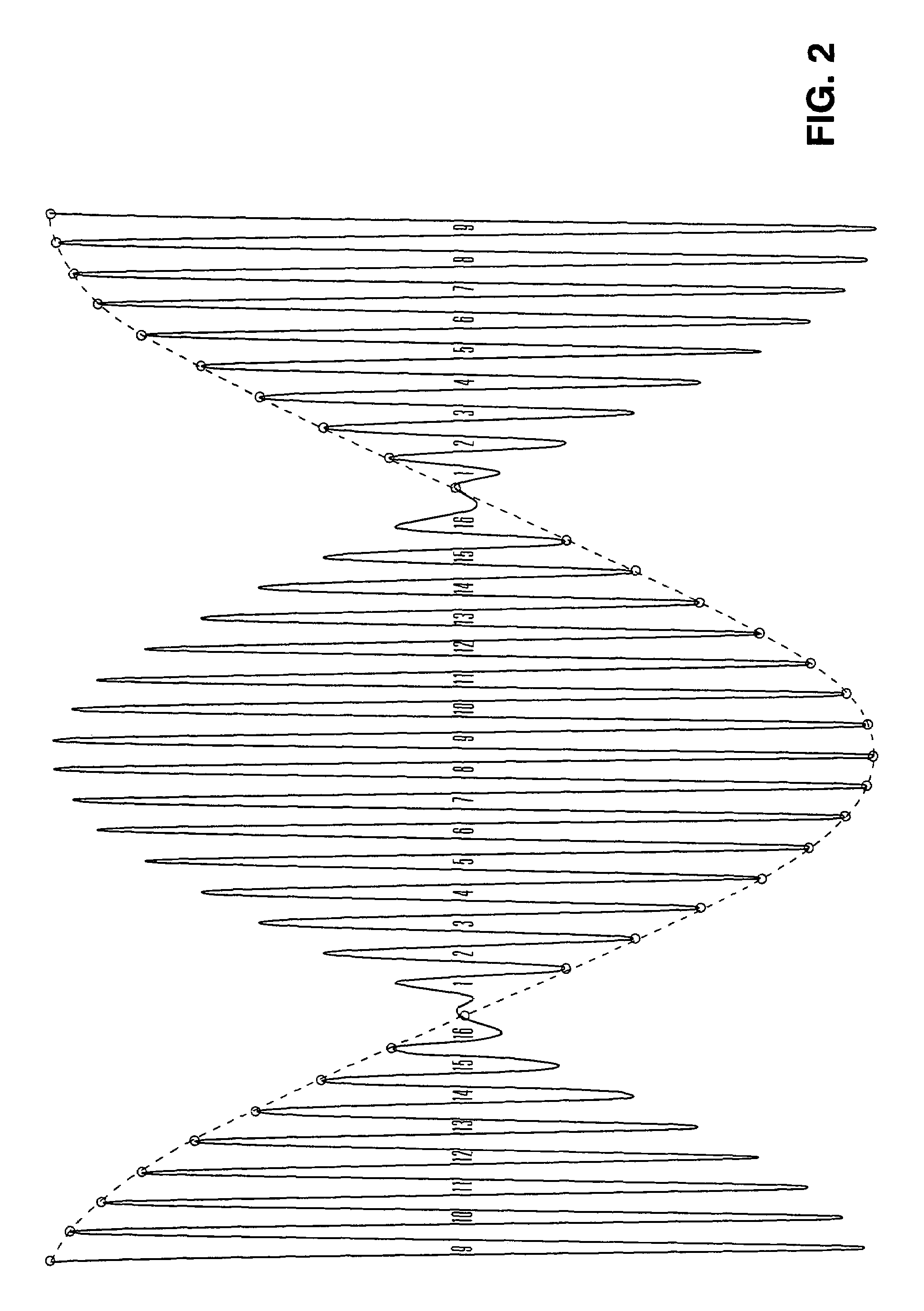Method and apparatus for simulating quasi-periodic circuit operating conditions using a mixed frequency/time algorithm
a mixed frequency/time algorithm and quasi-periodic circuit technology, applied in the field of analog circuit design simulations, can solve the problems of analog circuit simulation further complicated, many circuits cannot be analyzed with periodic operation, and the analysis of analysis is the most difficult challenge in analog circuit stimulation
- Summary
- Abstract
- Description
- Claims
- Application Information
AI Technical Summary
Problems solved by technology
Method used
Image
Examples
Embodiment Construction
[0027]FIG. 1 shows circuit block 102 including N circuit nodes, which will be used to illustrate a simulation process in accordance with the present invention. Circuit 102 receives S information signals I1, I2, . . . , Is from inputs 104.1, 104.2, . . . , 104.s, respectively. Circuit 102 also receives a clock (or reference) signal C from input 106. In response to receipt of the input signals, circuit 102 generates a signal at output 108.
1. The Improved MFT Algorithm
[0028]The behavior of a circuit (such as circuit 102 in FIG. 1) can be described by a set of nonlinear differential-algebraic equations (DAEs) that can be written as
[0029]ⅆⅆtQ(v(t))+I(v(t))+u(t)=0,(1)
Where Q(v(t))∈N is typically the vector of sums of capacitor charges at each node, I(v(t))∈N is the vector of sums of resistive currents at each node, u(t)∈N is the vector of inputs, v(t)∈N is the vector of node voltages, and N is the number of circuit nodes.
[0030]The present invention is particularly advantageous in si...
PUM
 Login to View More
Login to View More Abstract
Description
Claims
Application Information
 Login to View More
Login to View More - R&D
- Intellectual Property
- Life Sciences
- Materials
- Tech Scout
- Unparalleled Data Quality
- Higher Quality Content
- 60% Fewer Hallucinations
Browse by: Latest US Patents, China's latest patents, Technical Efficacy Thesaurus, Application Domain, Technology Topic, Popular Technical Reports.
© 2025 PatSnap. All rights reserved.Legal|Privacy policy|Modern Slavery Act Transparency Statement|Sitemap|About US| Contact US: help@patsnap.com



